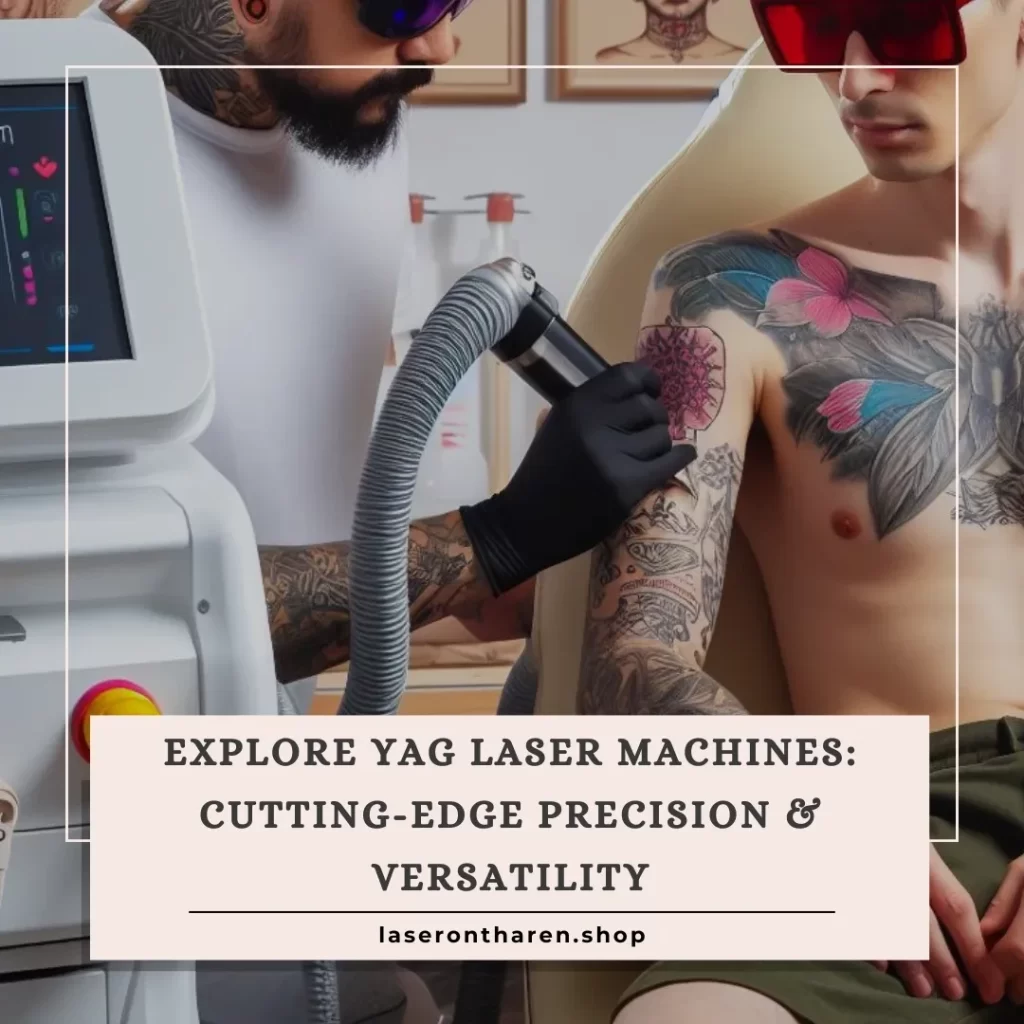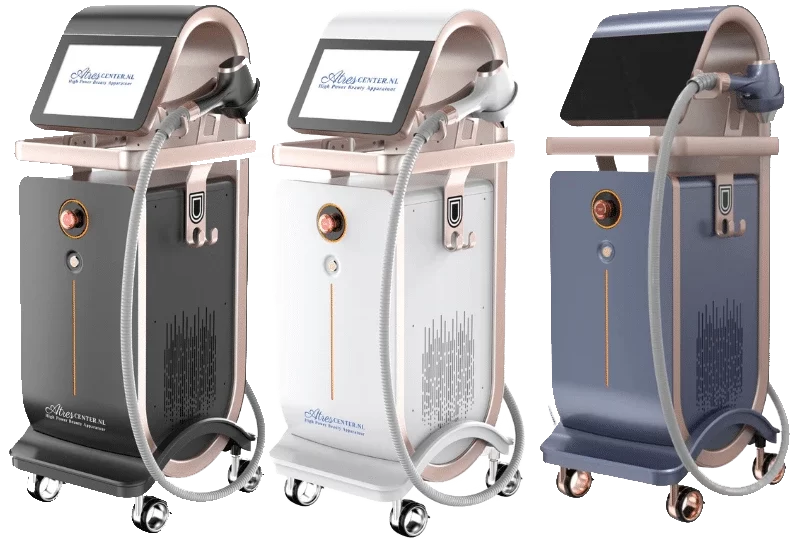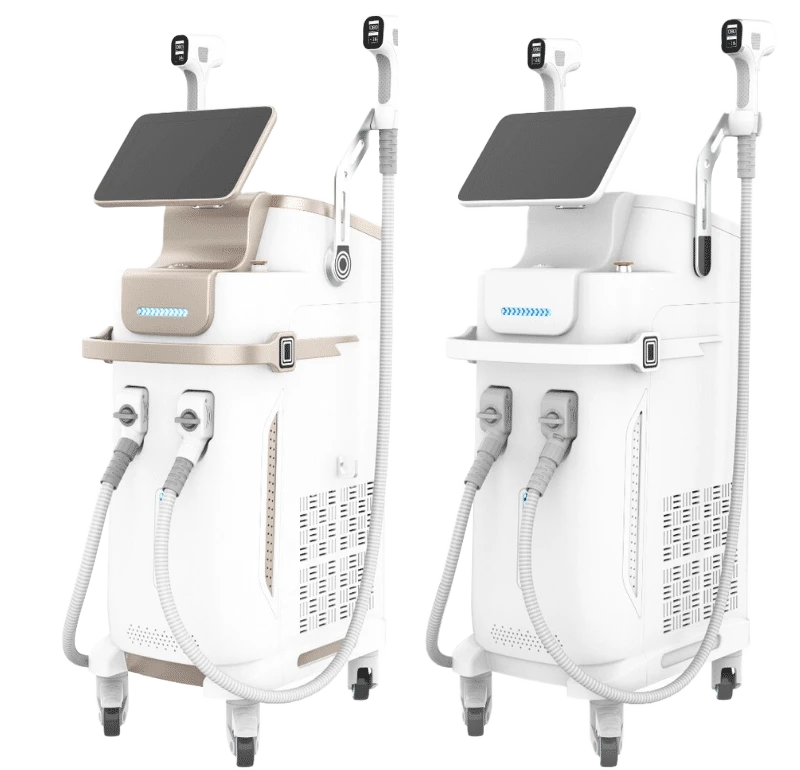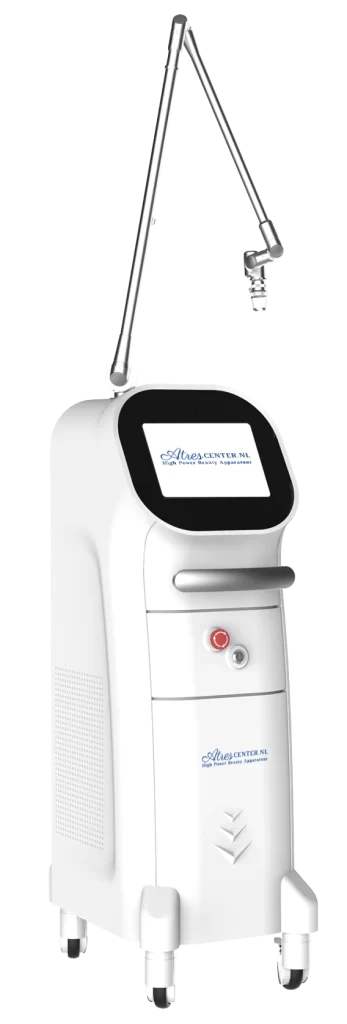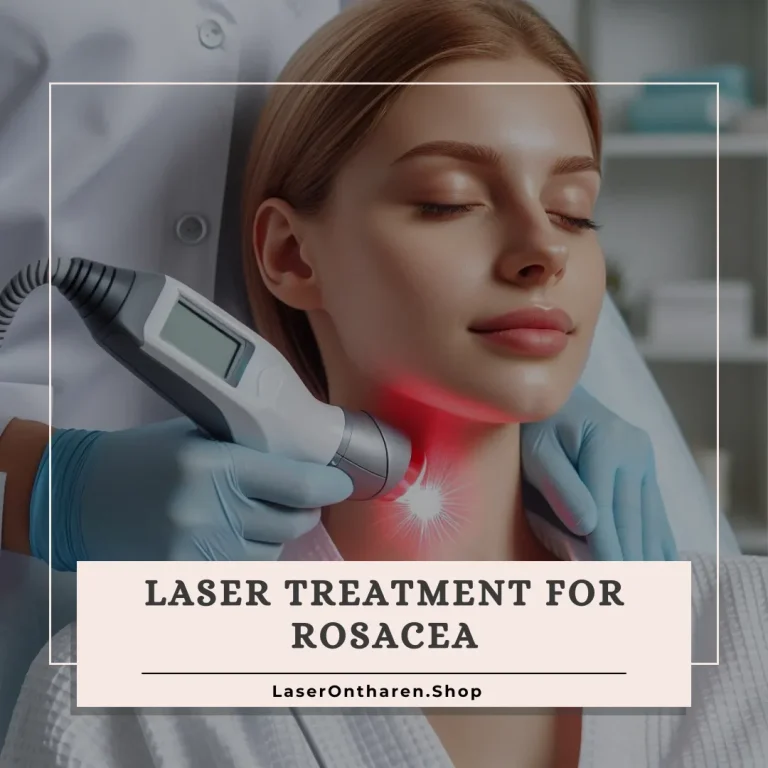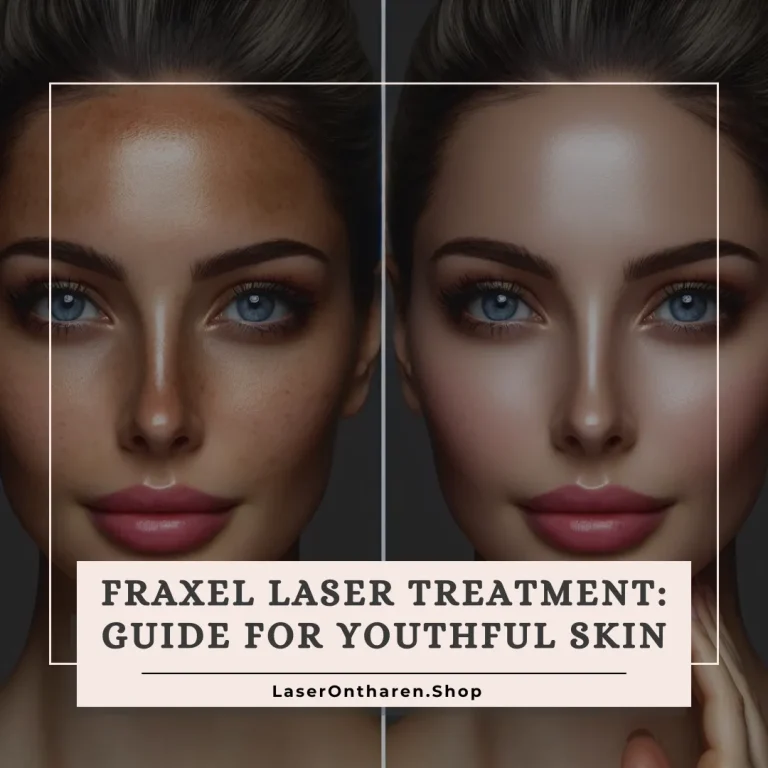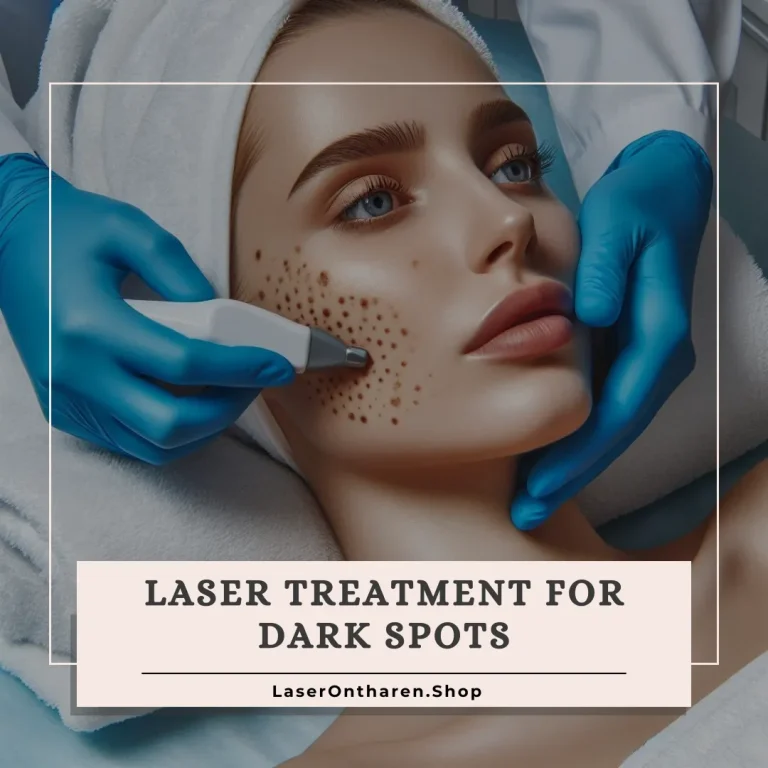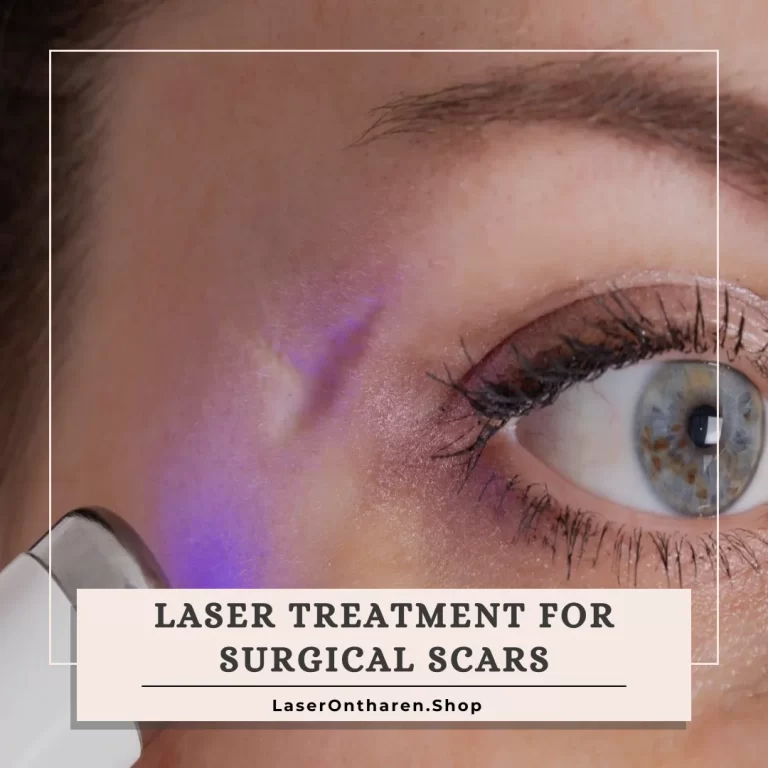Introduction to YAG Laser Machine
The ND-YAG (Neodymium-Doped Yttrium Aluminum Garnet) laser machine represents a significant advancement in laser technology, widely used in both medical and cosmetic treatments.
The journey of YAG lasers began in the early 1960s, marking a significant milestone in laser development.
This type of laser operates at a wavelength of 1034nm/532nm, making it versatile for various applications, including hair and tattoo removal.
The ND-YAG laser is known for its precision and ability to target deeper layers of the skin without affecting the surrounding tissues.
Over the years, advancements in technology have led to the creation of different types of YAG lasers, each tailored to specific applications.
As the demand for non-invasive treatments and precision in manufacturing processes grows, YAG laser machines continue to evolve, becoming more sophisticated and accessible.
In this article, we will explore how YAG laser machines work, their applications, benefits, and how they compare with other types of lasers.
We’ll also discuss the essential aspects of maintenance, safety guidelines, future trends, and tips on choosing the right machine for your needs.
How YAG Lasers Work
The ND-YAG laser machine operates using a crystal of yttrium aluminum garnet doped with neodymium ions, which is the source of the laser’s capability.
When an energy source, such as a lamp or a diode, excites these neodymium ions, they emit light.
This light amplifies within the crystal to create a high-intensity beam.
The laser emits light in a specific wavelength, typically 1064 nm for deeper penetration and 532 nm for superficial applications.
These wavelengths are particularly effective because they can be absorbed by a wide range of colors and pigments in the skin, making them ideal for applications like tattoo removal and pigmentation treatments.
One of the unique features of ND-YAG lasers is their adjustable parameters, such as pulse width (2000 picoseconds) and energy range (100-2000 millijoules).
This adaptability allows practitioners to customize the treatment according to the specific needs of each patient, ensuring precision and minimizing risks.
The frequency of the laser can be adjusted between 1-10 Hz, allowing for rapid treatment over larger areas without compromising effectiveness.
The laser also incorporates a red light at 650 nm, which helps in targeting the treatment area more accurately, enhancing the overall safety and efficiency of the procedure.
Applications of YAG Laser Machines
ND-YAG laser machines are renowned for their versatility and efficacy, catering to a wide array of applications in both medical and cosmetic fields.
Here are some of the primary uses:
Tattoo Removal: The ND-YAG laser is especially effective in removing darker tattoo inks.
The 1064 nm wavelength can penetrate deep into the skin to break down the ink particles, which the body then naturally eliminates.
For brighter colors, the 532 nm wavelength is used, making it a comprehensive solution for multi-colored tattoos.
Hair Removal: ND-YAG lasers provide a safe and effective solution for hair removal, particularly beneficial for individuals with darker skin tones.
The laser targets melanin in the hair follicles, reducing hair growth without damaging the surrounding skin.
Skin Pigmentation Treatments: Issues like sun spots, age spots, and other forms of hyperpigmentation respond well to ND-YAG laser treatments.
The laser helps in lightening or removing pigmented lesions by targeting melanin accumulations in the skin.
Skin Rejuvenation: By stimulating collagen production and promoting cellular renewal, ND-YAG lasers can enhance skin texture, tone, and overall appearance, leading to a more youthful complexion.
Vascular Lesions: ND-YAG lasers are also used to treat vascular lesions such as spider veins and broken capillaries.
The wavelength can penetrate to the vascular malformations and selectively coagulate them, often with minimal discomfort and downtime.
Acne Treatment: The laser can reduce acne by decreasing sebum production and destroying acne-causing bacteria.
Additionally, it promotes skin healing and reduces the appearance of acne scars.
This wide range of applications makes ND-YAG laser machines an indispensable tool in many clinical settings, capable of addressing multiple client needs with a single piece of equipment.
ND-Yag Laser machin’s Specifications
- Laser Type: ND-Yag Laser
- Wavelength: 1034nm/532nm
- Spot size: 1-5mm
- Pulse width: 2000ps
- Energy: 100-2000mj
- Frequency: 1-10Hz
- Red light: 650nm
- Screen & water tank: 10.4inch / 5L
- Power: 2000W
- Machine size: 650nm x 440nm x 440nm
- Package size: 930nm x 590nm x 610nm
- Net/gross weight: 32/82kg
Benefits of Using YAG Laser Machines
ND-YAG laser machines offer a plethora of advantages that make them a preferred choice in various dermatological and cosmetic procedures.
Here are some of the significant benefits:
- Versatility:
As highlighted earlier, YAG lasers can be used for a wide range of applications, from tattoo and hair removal to skin rejuvenation and vascular lesion treatment.
This versatility allows practitioners to use a single machine for multiple procedures, enhancing the efficiency and range of services offered. - Safety:
The ND-YAG laser is known for its safety profile, particularly for individuals with darker skin tones.
Unlike other laser types, which may cause pigmentation issues, the ND-YAG laser minimizes the risk of skin damage due to its unique wavelength and pulse characteristics. - Effectiveness:
YAG lasers are highly effective in achieving desired results in fewer sessions.
Whether it’s removing complex tattoo inks or treating deep-rooted pigmentation, the ND-YAG laser provides significant improvements, often visible from the first session. - Minimal Downtime:
Treatments with ND-YAG lasers generally involve minimal recovery time.
Patients can often return to their daily activities immediately post-treatment, making it a convenient option for those seeking quick cosmetic enhancements. - Precision:
The technology behind ND-YAG lasers allows for precise targeting of the treatment area.
This precision helps in effectively treating the intended area without affecting the surrounding healthy tissue, thus ensuring high-quality results. - Customizable Settings:
The ability to adjust settings such as pulse width, energy, and frequency allows practitioners to tailor treatments according to individual patient needs and conditions, ensuring optimal outcomes.
These benefits collectively contribute to the high demand and widespread use of ND-YAG laser machines in clinics and hospitals worldwide, underscoring their critical role in modern cosmetic and medical treatments.
Comparing YAG Lasers with Other Lasers
ND-YAG lasers are one of several types of lasers used in dermatological and cosmetic treatments.
Comparing them to other laser technologies helps highlight their unique advantages and suitability for specific treatments:
Alexandrite Lasers:
Alexandrite lasers emit at a wavelength of 755 nm, which is excellent for lighter skin tones but can pose a higher risk of pigmentation changes in darker skin.
In contrast, the ND-YAG laser’s 1064 nm wavelength is safer for all skin types, making it a more versatile option.
Diode Lasers:
Typically operating at 810 nm, diode lasers are another popular choice for hair removal.
While effective, diode lasers may not be as adept at treating finer or lighter hair as the ND-YAG laser.
Moreover, ND-YAG lasers can treat a broader range of skin types with minimal risk.
CO2 Lasers:
CO2 lasers, which operate at a 10600 nm wavelength, are highly effective for skin resurfacing and treating deeper skin layers.
However, they involve a more significant recovery time and a higher risk of skin damage, which contrasts with the ND-YAG laser’s minimal downtime and safety profile.
Ruby Lasers:
With a wavelength of 694 nm, Ruby lasers are effective for tattoo removal and pigmented lesions but are limited to lighter skin tones.
ND-YAG lasers provide more flexibility with similar applications but are safer for a broader range of skin types.
Er:YAG Lasers:
Emitting at 2940 nm, these lasers are excellent for skin resurfacing and achieve precise ablation at the surface level.
While they offer precision, they do not penetrate as deeply as ND-YAG lasers and are not suitable for deeper lesions or hair removal.
In essence, while other lasers have their specific advantages and optimal uses, ND-YAG lasers stand out for their versatility, safety across various skin types, and comprehensive range of applications.
Their ability to adjust key parameters like pulse width and frequency further enhances their utility in diverse clinical scenarios.
YAG Lasers Maintenance and Care
Proper maintenance and care of ND-YAG laser machines are crucial for ensuring their longevity, efficiency, and safety.
Here’s a comprehensive guide on how to maintain these sophisticated devices:
1. Daily Checks: Begin each day with a basic visual inspection of the laser machine.
Check for any signs of wear or damage, such as cracks in the casing or loose components. Also, ensure that all connections are secure and that the laser emits smoothly without interruption.
2. Regular Cleaning: The external surfaces of the laser should be cleaned regularly with a soft, damp cloth to remove dust and debris.
Avoid harsh chemicals that can damage the machine’s exterior. For internal components like lenses and mirrors, follow the manufacturer’s guidelines, usually involving careful cleaning with specific, non-abrasive solutions.
3. Cooling System Maintenance: ND-YAG lasers often come with a cooling system to prevent overheating.
This system, including any water tanks or radiators, should be checked regularly for leaks and refilled with distilled water as needed.
It’s crucial to ensure that the cooling system is functioning correctly to avoid thermal damage to the laser components.
4. Calibration: Regular calibration is essential to maintain the accuracy and effectiveness of the laser.
Calibration should be performed according to the manufacturer’s schedule or whenever the laser’s performance appears to deviate from expected parameters.
5. Software Updates: Like many modern devices, ND-YAG lasers may operate with software that controls their functionality.
Keeping this software up to date is essential for ensuring the machine runs smoothly and incorporates any improvements or security patches.
6. Professional Servicing: Besides daily and weekly maintenance routines, scheduling regular professional servicing is crucial.
A certified technician can perform a comprehensive check, including testing the laser’s output and safety features, ensuring that everything is operating within regulatory standards.
7. Record Keeping: Maintain a log of all maintenance activities, including dates, specific actions taken, and any parts replaced.
This record can be invaluable for troubleshooting future issues and ensuring compliance with regulatory requirements.
Proper maintenance not only extends the life of the ND-YAG laser machine but also ensures that it operates safely and effectively, providing optimal results for patients.
Safety Guidelines for Using YAG Lasers
Ensuring the safe operation of ND-YAG laser machines is critical for the protection of both the operator and the patient. Here are essential safety guidelines to follow:
1.Training and Certification: Only trained and certified personnel should operate ND-YAG lasers.
Comprehensive training includes understanding the machine’s functionalities, safety features, and proper procedures for all intended treatments.
2. Protective Gear: Operators and patients must wear appropriate protective eyewear specifically designed to shield against the laser’s wavelength.
This protection is crucial to prevent accidental eye exposure, which can lead to serious damage.
3. Treatment Area Preparation: Ensure that the treatment area is clean, well-ventilated, and free of any flammable substances.
Proper ventilation is especially important to evacuate any smoke or fumes produced during procedures like tattoo removal.
4. Skin Assessment: Before proceeding with any laser treatment, conduct a thorough assessment of the patient’s skin type, condition, and suitability for laser exposure.
This assessment will help tailor the treatment settings to each individual, minimizing the risk of burns or other adverse effects.
5. Emergency Protocols: Establish and familiarize all staff with emergency protocols in case of equipment failure or adverse reactions during a treatment.
This includes having emergency contact information, first aid equipment, and fire extinguishers readily accessible.
6. Regular Maintenance Checks: As part of safety, regularly scheduled maintenance checks (as discussed in the previous section) are necessary to ensure that the laser machine is functioning correctly and safely.
7. Clear Signage: Post clear safety signs around the laser treatment area.
Signs should inform about the laser in use, the need for protective eyewear, and other safety precautions.
8. Documentation and Consent: Always obtain informed consent from patients, outlining the risks, benefits, and safety measures associated with ND-YAG laser treatments.
Additionally, keep detailed records of treatment parameters and patient responses for future reference.
Following these safety guidelines will help ensure that ND-YAG laser treatments are conducted safely and effectively, maintaining the highest standards of patient care and regulatory compliance.
Future Trends in YAG Laser Technology
The field of laser technology, particularly ND-YAG lasers, continues to evolve with innovations aimed at enhancing efficiency, safety, and the range of applications.
Here are some of the promising future trends in this area:
-Future ND-YAG lasers are expected to offer even more advanced customization options, allowing practitioners to tailor every aspect of the laser treatment to individual patient needs. This includes more precise control over pulse duration, energy levels, and wavelength settings.
-There is a growing trend towards incorporating artificial intelligence (AI) and machine learning into laser technology. These advancements could lead to smarter systems that can analyze skin conditions in real-time and automatically adjust settings for optimal treatment outcomes.
-As technology advances, the components required for powerful lasers are becoming smaller and more efficient. This could lead to the development of more compact and portable YAG lasers, making them accessible for use in smaller clinics or in a mobile setting.
-With the increasing focus on patient safety, future ND-YAG lasers are likely to be equipped with enhanced safety mechanisms. These could include better sensors to detect skin type and automatically adjust intensity levels, or improvements in cooling systems to reduce the risk of thermal injury.
-Research continues to explore new applications for ND-YAG lasers, including treatments for various dermatological disorders, non-invasive surgeries, and even applications outside the medical field, such as in manufacturing and material processing.
-There is an ongoing push towards making laser machines more energy-efficient and environmentally friendly. Future designs may feature components that are both longer-lasting and less harmful to the environment, reducing waste and energy consumption.
-A trend in cosmetic and medical treatments is the use of combination therapies. Future ND-YAG lasers might be routinely combined with other therapeutic modalities, such as radiofrequency or ultrasound, to enhance treatment effectiveness and patient satisfaction.
These trends highlight the dynamic nature of laser technology and its potential to revolutionize various aspects of medical and cosmetic treatments, ensuring that ND-YAG lasers remain at the forefront of high-tech solutions.
Choosing the Right YAG Laser Machine
Selecting the appropriate ND-YAG laser machine is crucial for ensuring the success of treatments and the satisfaction of both practitioners and patients.
Here are key factors to consider when choosing the right YAG laser for your needs:
Intended Use: Define the primary purpose of the laser.
Whether it’s for tattoo removal, hair removal, skin rejuvenation, or treating vascular lesions, ensure the machine’s specifications align with your clinic’s main services.
Specifications and Features: Consider the technical specifications like wavelength, pulse width, energy output, and frequency.
For instance, a versatile machine offering both 1064 nm and 532 nm wavelengths would be suitable for a variety of pigmentation treatments and tattoo removals.
Additionally, check for features like adjustable spot size and integrated cooling systems, which can enhance treatment flexibility and patient comfort.
Safety and Compliance: Ensure the laser machine complies with local and international safety standards.
Look for features like automatic calibration, skin type sensors, and advanced safety protocols that prevent misuse and ensure patient safety.
Manufacturer Reputation and Support: Choose a laser from a reputable manufacturer known for quality and reliability.
Additionally, consider the level of support offered, including training for operators, maintenance services, and warranty terms.
User-Friendliness: The interface and ease of use are crucial, especially in busy clinical settings.
Opt for machines with intuitive controls and clear display panels that allow practitioners to easily adjust settings and monitor the treatment process.
Patient Comfort: Features that enhance patient comfort, such as built-in cooling systems or less invasive treatment capabilities, can be a significant advantage, improving patient experiences and treatment outcomes.
Cost-Effectiveness: Analyze the cost of the machine against its expected lifespan and the potential return on investment.
Consider both upfront costs and ongoing expenses, such as maintenance and consumables.
A more expensive machine might offer greater efficiency and lower long-term costs due to fewer repairs and higher patient throughput.
Reviews and Testimonials: Look at reviews and testimonials from other users to gauge the machine’s performance and reliability in real-world settings.
Feedback from fellow practitioners can provide valuable insights into the practical benefits and limitations of a model.
Choosing the right ND-YAG laser machine involves a careful assessment of your clinic’s needs, the machine’s features, and the manufacturer’s support.
Making an informed decision will ensure that you acquire a machine that not only meets your current requirements but also adapts to future technological advancements and market demands.
Our Advanced Laser Machines
In the world of hair removal and tattoo removal, our machines represent the pinnacle of laser technology, offering unparalleled performance and outcomes.
Among our top offerings are:
High-Power Diode Laser Ice Pro A+:
Got any questions about High-Power Diode Laser Ice Pro A+?
this marvel combines 755nm, 808nm, and 1064nm wavelengths, ensuring optimal absorption by melanin and deeper penetration for effective hair removal and tattoo fading.
Its powerful 2000W laser handle output and innovative cooling system guarantee both efficacy and comfort during treatments.
High-Power Diode Ice Laser Maxx – Double Lever:
Got any questions about High-Power Diode Ice Laser Maxx – Double Lever?
this dual-handled laser powerhouse is perfect for busy clinics seeking to maximize treatment efficiency without compromising on quality.
With the same advanced features as the Ice Pro A+, this machine is designed for higher patient throughput and versatility.
Co2 Fractional Laser:
Ideal for those seeking skin rejuvenation, our Co2 Fractional Laser offers superior results in treating scars, wrinkles, and fine lines.
Its precision and power make it a go-to solution for clients aiming for a youthful and refreshed appearance.
Picofocus – Pico Laser:
For tattoo removal and pigmentation correction, the Picofocus Pico Laser stands out.
Its high precision and minimal downtime transform skin treatment experiences, making it a favorite among specialists and clients alike.
Each of these machines embodies cutting-edge of laser technology, designed to cater to a wide range of needs with exceptional results.
Our commitment to innovation ensures that professionals can offer their clients the best in laser treatments, setting new standards in care and efficiency.
Conclusion
The ND-YAG laser machine is a transformative tool in both medical and cosmetic fields, offering precise and effective treatments for a variety of skin concerns.
As we continue to see advancements in this technology, the potential for even more targeted and safe treatments is promising.
For practitioners looking to invest in a reliable, versatile, and efficient laser system, the ND-YAG stands out as an excellent choice.
Embracing this technology not only enhances treatment capabilities but also aligns with the evolving expectations of a discerning clientele.
